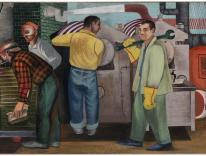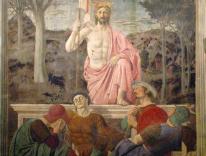Poor, prescient Don DeLillo, forever to be condemned for his ability to tell us how we live now a quarter of a century before we start to think about it ourselves. Rereading Libra during what Paul Elie calls “assassination season” I’m struck again by DeLillo's ability to anticipate (foretell? Warn of?) the ripple effects of each small advance in technology, every incremental expansion of media’s reach – including especially the shrugging acceptance of the manipulation of word, image, and what has come impersonally to be known as personal data. One of the characters in DeLillo’s 1988 fictional reimagining of John F. Kennedy’s assassination assembles a plot centered on a fabricated killer, a would-be assassin conjured out of fake ephemera:
He would show the secret symmetries in a nondescript life. An address book with ambiguous leads. Photos expertly altered (or crudely altered). Letters, travel documents, counterfeit signatures, a history of false names. It would all require a massive decipherment, a conversion to plain text.
The italics are mine, and meant to highlight DeLillo’s particular expertise in concisely expressing how reality can be made to seem more real by making it seem less so. A lot of “seems” in there but that’s the point; Libra is a hall of mirrors about a hall of mirrors. The notion of fractured images endlessly reflecting back on themselves, a jumble of past, present and future, is captured in the lines of another character:
I look at these ornate old buildings in bustling town squares and I find them full of a hopefulness I think I cherish… It’s an optimistic architecture. It expects the future to make as much sense as the past. I’m talking about the American past, as we naively think of it, which is the one kind of innocence I endorse.
The innocent past is already a myth in 1963, yet still worth putting stock in even as—readers know—it’s about to be irreparably shattered, with the assassination itself having long since become an important part of the symbolic construct that character is commenting on.
Reading Libra now has dovetailed with reports in the past few days on the “evolving” treatment of Kennedy in history textbooks (from visionary leader to failed or even incompetent executive) and how his closest aides and best-known biographer went beyond the acknowledged burnishing of his image to expunge quotes and even reorder events in a way that would better comport with the historical record they were laying down. Searching for actual (real?) fictions inspired by Kennedy I found a couple of different lists; unsurprisingly, most of the works focus on the assassination—either positing different conspiracies or a different outcome.
But Kurt Vonnegut’s “The Hyannis Port Story” takes place before November 1963, when no such reimagining would have been required. Written a little past the midpoint of Kennedy’s only term, it presumes an upcoming re-election campaign against Barry Goldwater, a huge illuminated portrait of whom graces the property of a vocal Republican living across the street from the Kennedy compound. Vonnegut even depicts a conversation between the Goldwater Republican and Kennedy, who one night asks why the sign has been turned off, and whether it can be turned back on: “ ‘That way,’ said the President, ‘I can find my way home.’”
The piece was ready to run in a late 1963 issue of The Saturday Evening Post, but its publication was canceled [.pdf] because of the assassination. It wasn’t until five years later that “The Hyannis Port Story” appeared, collected in Vonnegut’s Welcome to the Monkey House. It is straightforward and funny and maybe even innocent, and, by virtue of when it was written, from a much different kind of past than that which DeLillo depicts.
Please email comments to [email protected] and join the conversation on our Facebook page.
Share
Previous Story
China syndrome
Next Story
Christian Love In Action: Whitey Bulger Trial Edition


